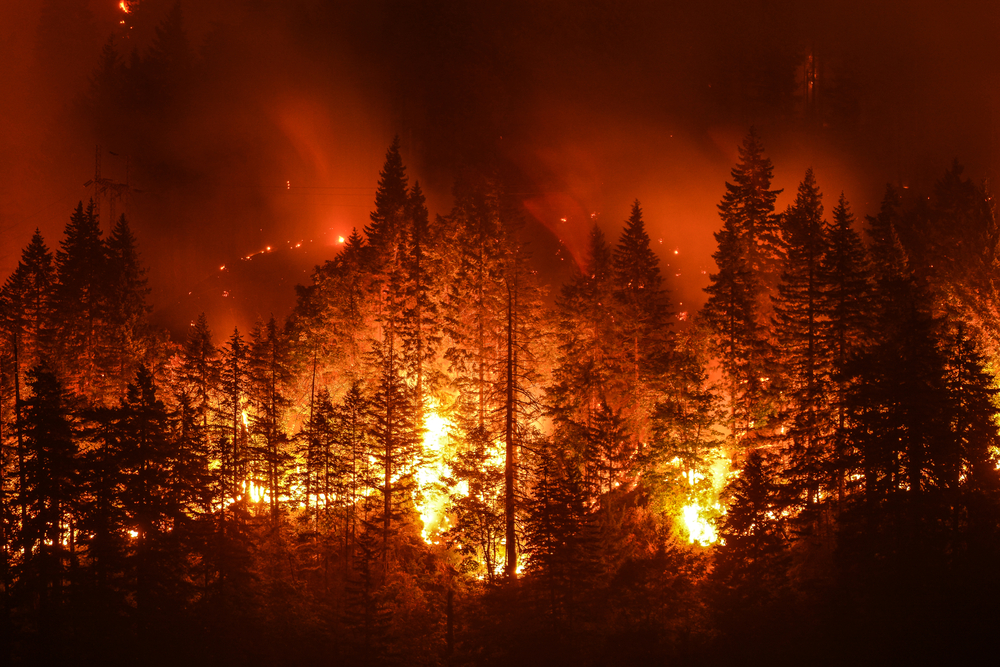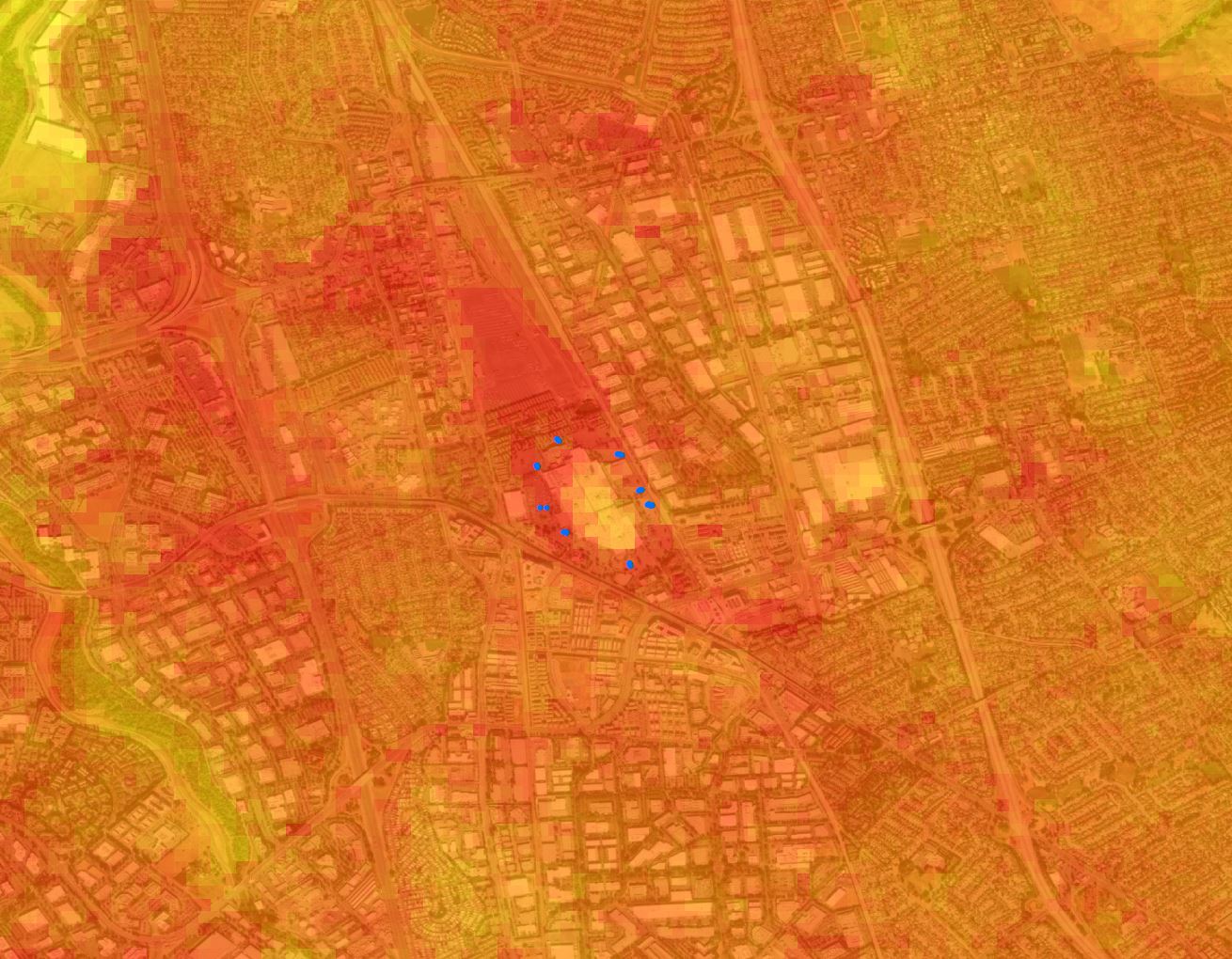Counting the harvest during a pandemic
The pandemic and the associated isolation policies have changed the situation with
Subsequently, the lack of public information aboutcrops caused uncertainty and volatility in agricultural markets and prices during the growing season. “Markets want to know how much a particular variety can be harvested,” explains Hannah Kerner, assistant research professor at the University of Maryland at College Park.
Kerner and her team turn to satellite dataNASA and USGS Landsat, Sentinel-2 from ESA (European Space Agency), the MODIS spectroradiometer on board the Terra and Aqua satellites, and the Planet Project satellites to complement USDA information.
“We use satellite data and machinelearning to map which crops are growing and where, ”concludes Kerner. In particular, they track key commercial crops, including corn and soybeans in the United States and winter wheat in Russia.
Dynamics of fires during travel restrictions
Reducing the number of planned fires has increased biodiversity and reduced fuel loads in the southeastern United States this spring.
With the entry into force of restrictions on COVID-19The U.S. Forest Service temporarily suspended all of its intentional or prescribed burnings on federal lands in the southeast in March. Government agencies in Mississippi, South Carolina, and North Carolina followed suit.
Ben Poulter, Research Fellow, Space CenterNASA's Goddard mission in Greenbelt, Maryland, uses the Visible Infrared Imaging Radiometer (VIIRS) suite on NASA's satellite and NOAA's Suomi Nuclear Power Plant, and MODIS data to track fires across the country. This allows him to find out how social distancing policies, such as federal travel restrictions, have impacted both prescribed burns on the East Coast and wildfires in the West.

In the end, his team of scientists wants betterunderstand how fewer fires in the southeast could affect biodiversity. This is because some species rely on fires to thrive. The result is the accumulation of fuel cells in the vegetation. This could potentially lead to more dangerous forest fires in the future.
Researchers also want to understand how politicsCOVID-19 is making firefighting more difficult. In addition, scientists are studying how the total number of fires across the country may affect atmospheric chemistry.
Heat flow study
Christopher Potter, Research FellowNASA's Ames Research Center in California's Silicon Valley is studying how California's shelter-in-place mandate in the San Francisco Bay Area has reduced the number of cars on the road and changed the way the surfaces of parking lots, highways and large industrial buildings absorb sunlight and reflect infrared heat.
Potter and his team monitor parking lots andother surfaces to see if they are hotter or cooler during the pandemic. Visible sunlight hits a surface and is then absorbed and re-emitted as heat.
The team uses temperature readings fromsatellite thermal infrared sensor from Landsat and ground temperature from ECOSTRESS—a NASA sensor on the International Space Station to map large, flat urban features in the Bay Area and measure their heat flow. Scientists are also collecting ground measurements to validate the data.
Potter examines questions such as ifcars are parked and concentrated in gigantic areas, do surface reflectivity and overall heat flow change? Even shiny car windows can be enough to reflect sunlight, Potter said.
Potter and his team want to know how duringThe pandemic has changed the flow of heat in cities in the Bay Area and how this change has helped create a more or less healthy environment for the millions of people living in it. Understanding the potential changes in heat flow is a key indicator of how COVID-19 has changed the environmental impact in the Bay Area, Potter said.
 This image shows fluctuationsECOSTRESS earth surface temperatures measured on 22 May 2020 during a period of complete isolation in an area centered on the Big Shopping Center in Milpitas. The blue dots represent ground measurements on May 22nd at large vacant sites. Dark reddish hues indicate the highest temperatures in dark asphalt parking lots and roads, while yellow-greenish hues indicate colder temperatures in parks and semi-desert areas. Bright white roofs are in medium shades.
This image shows fluctuationsECOSTRESS earth surface temperatures measured on 22 May 2020 during a period of complete isolation in an area centered on the Big Shopping Center in Milpitas. The blue dots represent ground measurements on May 22nd at large vacant sites. Dark reddish hues indicate the highest temperatures in dark asphalt parking lots and roads, while yellow-greenish hues indicate colder temperatures in parks and semi-desert areas. Bright white roofs are in medium shades.
Sources: Christopher Potter, NASA Ames Research Center
The effect of airplanes on temperature reduction
When you look at clear blue skies and conditions are most appropriate, you can see a plane hovering overhead, leaving a distinct white trail of clouds behind it.
These clouds, or contrails, are formedaircraft engine exhaust or air pressure changes. William Smith and Dave Duda of NASA's Langley Research Center in Hampton, Virginia have been studying contrails for several decades. “Contrails are one of the few clouds that we create ourselves,” Duda explained. While their effects vary and are difficult to quantify, their overall effect is warming.
 This image was taken from the GOES-16 satellite on April 1, 2018, when there were many flights and, subsequently, many contrails.
This image was taken from the GOES-16 satellite on April 1, 2018, when there were many flights and, subsequently, many contrails.
Sources: William Smith, NASA Langley Research Center
When travel bans and policies applyisolation due to COVID-19, we fly much less and produce fewer contrails. Duda and Smith want to quantify this decrease in order to better understand how air traffic density affects contrail formation and radiative forcing. In other words, does fewer planes and contrails help to cool the atmosphere?
The command uses the established algorithmtrail detection to assess the atmosphere over the United States and the North Atlantic air traffic corridor during the full or partial ban in 2020, and compares it to a baseline period two years earlier when air traffic was unrestricted. Duda and Smith are also using MODIS to determine the optical properties of contrails to better understand how they reflect sunlight and capture energy from the surface and atmosphere below.
Improving our understanding of how and whencontrails are formed, could help scientists inform airlines about ideal routes for aircraft flights. “It may be possible to reduce contrails and their effects by adjusting flight altitude or route from time to time, as airlines do now, to avoid turbulence,” Smith explained.
The link between air pollution and rainfall reduction
Gabriele Villarini, professor at the University of Iowain Iowa City, and Wei Zhang, a scientist at the same institute, want to understand the connection between the decline in air pollution during the pandemic and the sharp decline in precipitation in the western United States.
Moisture in the atmosphere condenses in the smallestparticulate matter such as dust and falls to the Earth in the form of rain and snow. The reduction in particles during the pandemic could be responsible for the decrease in rainfall in February and March 2020 in the western United States, where it received 50% less precipitation compared to a normal year. Understanding how reduced precipitation is related to reduced aerosols can be beneficial for water managers.
Villarini seeks to use satelliteNASA data on water vapor, precipitation and aerosols, and an integrated climate model. It can combine atmospheric conditions such as humidity and temperature with chemical properties and processes occurring in the atmosphere. The model will help scientists pinpoint the extent to which declining aerosols are responsible for reduced precipitation rather than natural variability in the climate system.
“This project will help us understand how COVID-19 affects the environment,” concludes Villarini.
How Humanity Affects Water Quality and Ecosystems in Belize
Belize's coastal area includes the largestbarrier reef in the Northern Hemisphere, coastal atolls, several hundred sandy reefs, mangrove forests, coastal lagoons and estuaries. It is one of the most biodiverse ecosystems in the Atlantic and is home to fish and sea turtles, many of which are endangered.

Seven sections of the Belize Barrier Reef System are important habitat for endangered species including sea turtles, manatees and the American crocodile.
Robert Griffin, professor at the University of Alabama atHuntsville, was working on a NASA project to study reef health when the COVID-19 pandemic began. “The pandemic created a natural experiment,” Griffin explains. This will help scientists better understand how urban pollutants affect water quality and the health of coral reefs.
Griffin and his team are studying how tourism declines are affecting urban and agricultural sources of pollutants such as nitrogen and phosphorus and water quality off the Belizean coast.
In addition to ground data, the team usesLandsat images to highlight how the pandemic is affecting land-use change, which also changes the amount of pollutants produced and their ability to reach water bodies and ecosystems. The scientist also uses MODIS and VIIRS data to monitor water quality.
Griffin's team works with governmentBelize officials to influence the development of the coastal marine environment over the next five years. This study can serve as a guide for land-use planners as they decide how to deal with urban non-point sources of pollution such as nutrients and sediment that enter the water and affect coral reef systems.
Dust storms and coronavirus infection
Pablo Mendes-Lazaro, University ProfessorPuerto Rico in San Juan, is studying how the environment might affect the spread of the new coronavirus that causes COVID-19. In particular, he wants to know if the seasonal African dust that travels to the Caribbean every year between May and August will have a significant impact on the health and mortality associated with the virus.
African dust travels from the Sahara Desert across the Atlantic Ocean to Puerto Rico and the Caribbean. Microorganisms in dust particles can be associated with infectious diseases.
Mendez-Lazaro and his team are working with epidemiologists and many other specialists to better understand how African dust affects public health.
The team uses VIIRS to measure aerosolsin the atmosphere as a proxy for dust clouds arriving in the Caribbean; and MODIS and ESA's Copernicus Atmospheric Monitoring System for aerosol characterization.
Mendes-Lazaro works closely with the MinistryHealth Puerto Rico, the National Meteorological Service office in San Juan, and with doctors and patients to collect information on people who have contracted respiratory illnesses from exposure to African dust.
Weather, air quality and COVID-19
Julia Gel, professor at the University of Texas atDallas of NASA's Jet Propulsion Laboratory in Pasadena, California, along with other staff, wants to find out what environmental factors could affect the second wave of COVID-19 and determine how confident scientists can be in those findings.
Her interdisciplinary team is studying whetherthe temperature and humidity of the surface air on the rate of transmission of the coronavirus, and if so, how this process occurs. It also helps to identify a potential link between aerosols and the severity and mortality of the disease.
Gel and her staff use weather data,received from the atmospheric infrared probe on the Aqua satellite and the cross-track infrared probe on the Suomi NPP satellite. The team will receive aerosol data from a polygonal spectroradiometer and MODIS and will use machine learning algorithms and advanced analysis to track the dynamics of the spread of the virus and its mortality rate over space and time.
In particular, her team uses geometricdeep learning algorithms combined with topological data analysis. This allows for the tracking of transmission patterns of COVID-19, which are caused, for example, by different characteristics of the population. It is about age, gender, ethnicity and income, as well as environmental factors. Advanced tools enable the team to consider factors that are not available with traditional approaches based on geographic proximity.
Julia Gel is committed to providing a powerfula software tool that will help predict the seasonal evolution of COVID-19 regionally and globally, while quantifying a wide range of associated uncertainties.
Read also
The USA approved the smallest nuclear reactor in the world
Simulation showed what dark matter would look like
Scientists have found out why children are the most dangerous carriers of COVID-19